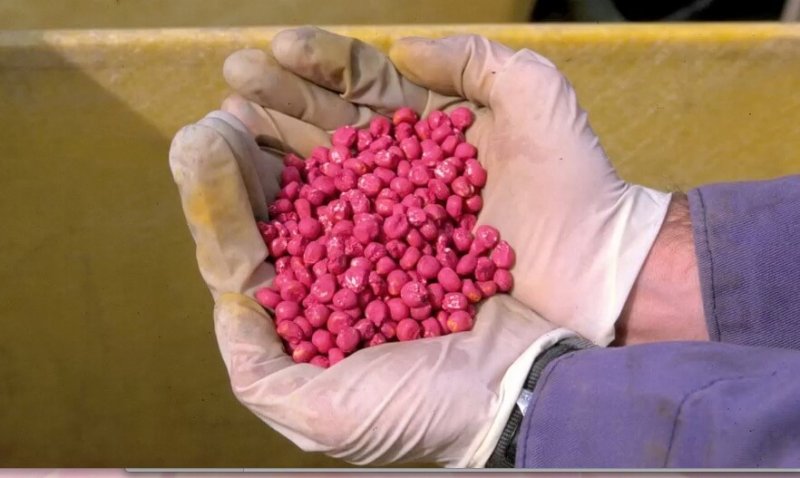1. They are a highly effective tool for farmers to protect the genetics they have purchased.
2. They are an extremely targeted, precise approach for application that is a critical component of safe integrated pest management practices.
This ultimately reduces the need for farmers to apply products over the entire field – resulting in benefits for both growers and the environment.
Seed treatments provide seeds with an important first line of defense from soil born pests and disease through germination and emergence. By helping protect the developing seedling during its most vulnerable time, today’s innovative seed treatments allow farmers to do more with less. For the environment, this means less impact on natural resources and non-target organisms. For farmers, it means less production costs, and higher, more consistent yields. For all of us, it means access to high-quality, affordable food we count on for our families.
In addition to their effectiveness, it’s important to note that — despite what you might read in certain media outlets — treated seeds are indeed highly regulated, just as foliar- and soil-applied pesticides are. The Federal Seed Act regulates the labeling, sale and movement of seed in the U.S. It’s important to note that Federally approved labels must reflect the risk assessment and mitigation processes. These products must also undergo thorough evaluation by the U.S. Environmental Protection Agency (EPA) and applicable state agencies prior to commercialization and periodically thereafter.
Yet, despite their proven benefits and highly regulated nature, these tools — not unlike many other agricultural innovations today — are generally misunderstood outside of the agriculture community. This misunderstanding has led to increased scrutiny by the media, and misguided policy efforts, particularly at the local and state levels. Take for example, what we’re currently seeing in the state legislatures.
The 2021 state legislative sessions have no doubt been more active than previous ones. Factor in COVID considerations, and the result turns out to be a very challenging session for lawmakers and public interests. Among those challenges for the seed industry were the numerous bills that would affect treated seed. Not only were more bills tracked in the states by ASTA this year, but about a third of them involved treated seed, seed treatment materials or related activities.

This legislation was generally aimed at further research studies, creation of regulatory oversight committees, change in regulatory status of seed treatment materials, limitation of use, outright bans of treated seed and/or seed treatment materials or local rule expansion. Among the significant bills that passed were a prohibition of outdoor neonicotinoids use (Maine) and only allowing the use or purchase of neonics by certified applicators (Maryland). Legislation affecting treated seed is expected to be just as vigorous during the 2022 state legislative sessions.
As an industry, we know the value of treated seeds; and we know that policies that would take these tools out of the hands of growers would have devastating unintended consequences – for farmers’ livelihood, food security and environmental sustainability. Without treated seeds, farmers would be forced to rely on a few, older and less precise classes of chemistry. According to research by AgInfomatics, if seed treatments were not available to farmers, one pound of neonicotinoids would be replaced with nearly five pounds of other insecticides, resulting in an increase in application rate per acre of 375% and hundreds of millions of dollars in additional costs to farming operations. In addition, U.S. cropped land would need to increase between 340,000 and 410,000 acres to offset losses in yield and quality, much of which would come from the Conservation Reserve Program, environmentally sensitive land established to preserve water, soil and wildlife.
That is why ASTA our continues to place a high priority on educating policymakers about treated seed – specifically around safety and efficacy. As we have these important discussions with policymakers, it’s critical that we simultaneously continue to do our part to communicate along the entire seed treatment value chain, around the importance — and necessity — of proper stewardship. This has been an ongoing and longstanding commitment of our industry. Several years ago, ASTA in collaboration with industry and grower partners, developed the Guide to Seed Treatment Stewardship — a comprehensive set of best practices, for applicators and farmers, around the handling of treated seed. Along with the guide is a set of outreach and education tools, including handouts, videos and FAQs, available for use and download. Each spring and fall, ASTA engages in a targeted communications campaign to help remind industry and growers to follow all applicable laws and regulations around the safe planting, harvesting and disposal of treated seed.
Today’s farmers need access to every tool available, including the newest seed treatments, to safeguard the long-term sustainability of our food, our farms, and our planet. To ensure continued access to these tools, as an industry and as growers, we all have a role to play. We all must work together — both in terms of adhering to all stewardship guidelines and regulations, from application to disposal, and in communicating around the necessity and safety of these tools.
Andy LaVigne is the President and CEO of the American Seed Trade Association (ASTA). Andy can be found on Twitter @andylASTA
A version of this article was originally posted at Seed World and is reposted here with permission. Seed World can be found on Twitter @SeedWorldMag





























